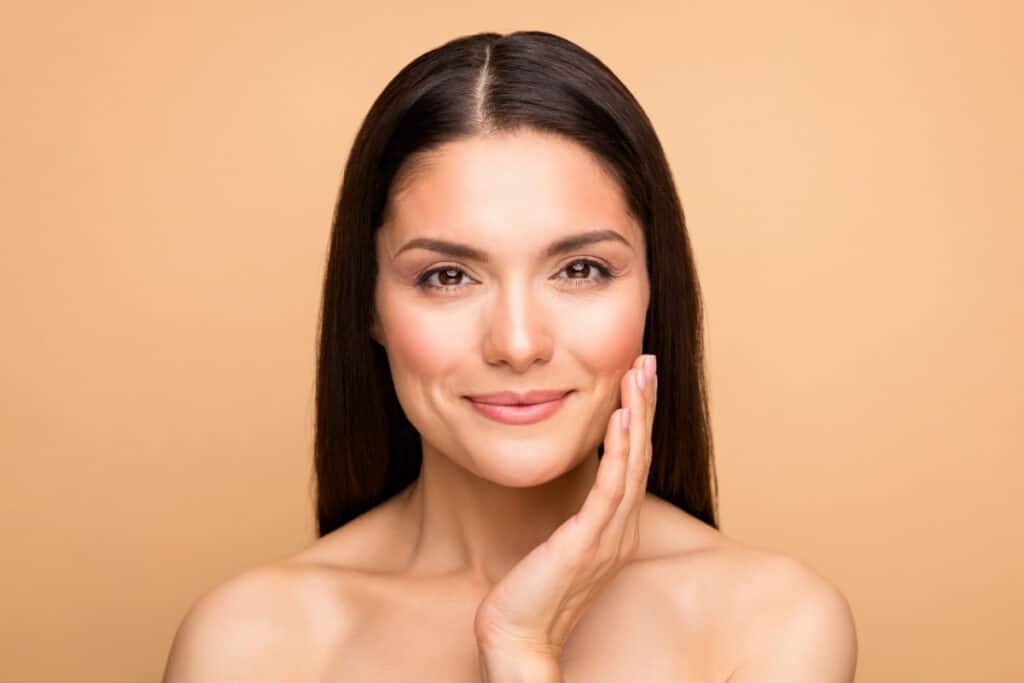Wondering what really happens after buccal fat removal—not just in the first few weeks, but years down the line? This piece breaks down the process from recovery to the long-term effects, including what buccal fat removal looks like 10 years later.
Dr. Ran Rubinstein, a facial plastic surgeon with board certification, shares his views on how the face alters with time after the operation. His information supports patient understanding of all aspects, from short healing periods to the potential effect on facial maturation. This is so they can reach decisions based on data before opting for surgery.

The Essentials of Buccal Fat Removal
- Results aren’t instant—swelling takes time to go down, and final results usually show up a few months after surgery.
- What your face looks like 10 years later can be influenced by aging, weight changes, and skin elasticity.
- The procedure is permanent, so it’s important to think about how your face might change as you get older.
- Not everyone is a perfect fit for buccal fat removal—it depends on your facial structure and long-term goals.
- Some people get the best results by combining this with other treatments like chin lipo or fillers.
Immediate Post-Procedure Period (0-6 Months)
Early Recovery and Healing Process
In the immediate aftermath of buccal fat removal surgery, patients typically experience swelling and bruising, affecting their facial muscles and leading to a temporarily rounded appearance.
Dr. Ran Rubinstein emphasizes the importance of following post-operative guidelines to ensure a smooth recovery. Key points during this phase include:
- Monitoring for Complications: Keeping an eye on any signs of infection or unexpected changes in facial symmetry or bone structure.
- Adherence to Aftercare Instructions: Following the specific instructions provided by the surgeon, such as keeping the head elevated and avoiding strenuous activities, helps in reducing fat deposits and swelling.
Short-term Aesthetic and Medical Observations
During the first six months, the initial results of buccal fat removal become evident. Patients often notice a reduction in cheek volume, leading to a more defined facial contour. However, it’s crucial to understand that:
- Individual Variation: Each patient’s recovery and results differ based on their facial anatomy and health status.
- Final Results Are Not Immediate: Swelling can obscure the true outcome, which gradually becomes apparent as the fat cells in the cheeks reduce.
Short-term Follow-up (1-2 Years)
Assessing Buccal Fat Pad Removal Results
At this stage, the majority of patients begin to appreciate the full extent of their cheek reduction surgery. Dr. Ran Rubinstein highlights that:
- Facial Contours Become More Defined: The reduced cheek fat pads lead to a more sculpted facial appearance, enhancing cheek contour.
- Comparison with Pre-Procedure Photos: It’s often helpful to compare current facial features with those before the surgery to assess the changes in facial symmetry and rounded cheeks.
Complications and Revisions in the Early Years
While buccal fat removal is generally safe, there can be instances where complications or dissatisfaction with results might lead to revision procedures.
Factors such as asymmetry, an overly gaunt appearance, or issues with facial muscles can be concerns. Dr. Ran Rubinstein advises:
- Regular Follow-ups: Essential for monitoring progress and addressing any issues promptly.
- Understanding the Limitations: Recognizing that while revisions are possible, they come with their own set of risks and limitations.
Mid-term Outcomes (3-5 Years)
Aesthetic Stability and Appearance Changes
As years pass, patients observe how their facial features settle post-buccal fat removal. Dr. Ran Rubinstein notes that:
- Stabilization of Results: The changes in facial structure tend to stabilize, offering a clearer picture of the long-term appearance.
- Aging and Facial Volume: Aging naturally affects facial fullness and skin laxity, which can alter the initial results of buccal fat removal.
Patient Satisfaction Levels Mid-term
The mid-term period is crucial for evaluating patient satisfaction. Most find that the reduction in chubby cheeks has enhanced their facial profile and symmetry, leading to increased confidence. However, Dr. Ran Rubinstein cautions that:
- Expectations vs. Reality: It’s important for patients to have realistic expectations about the outcomes of cosmetic surgery procedures.
- Changing Aesthetics: As trends and personal preferences evolve, some may reconsider their satisfaction with the procedure.
Long-term Effects (10+ Years)
Lasting Impact on Facial Contour and Aging
Over half a decade post-procedure, the long-term effects of buccal fat removal become apparent. Dr. Ran Rubinstein explains that:
- Aging and Facial Changes: The removal of buccal fat pads can influence how the face ages, potentially leading to a more aged appearance or appearance of jowling in some individuals.
- Maintaining a Healthy Weight: Significant weight fluctuations can impact the overall facial appearance, affecting the results of the surgery.
Long-term Medical Observations and Risks
Long-term risks associated with buccal fat removal are rare but possible. These may include changes in facial expressions due to nerve impact or uneven fat distribution. Dr. Ran Rubinstein stresses the importance of:
- Ongoing Monitoring: Regular check-ups, even years later, can help in identifying and addressing any late-onset complications.
- Lifestyle Factors: Maintaining a healthy lifestyle can positively influence the longevity of the results.
Reconsidering the Popularity of Buccal Fat Removal
The Controversy Surrounding Buccal Fat Removal
Buccal fat removal has been a topic of debate among cosmetic surgeons and patients alike. Dr. Ran Rubinstein sheds light on the reasons behind this controversy:
- Celebrity Influence: Public figures like Chrissy Teigen sharing their experiences with buccal fat removal have significantly influenced its popularity.
- Misconceptions and Misinformation: There’s a need for clear, accurate information regarding the potential risks and realistic outcomes of the procedure.
When Buccal Fat Removal May Not Be the Right Choice
Not everyone is an ideal candidate for buccal fat removal. Dr. Ran Rubinstein emphasizes that:
- Individual Facial Structure: The procedure may not be suitable for those with naturally less facial fat or more prominent facial bones.
- Future Aging Process: Consideration of how facial features will change with age is crucial in deciding whether to undergo this surgery.
The Importance of Making an Informed Decision
Understanding the Potential Downsides and Regrets
Making an informed decision about buccal fat removal is critical. Dr. Ran Rubinstein advises considering:
- Long-term Effects: Understanding that the removal of buccal fat pads is irreversible and can affect the facial appearance as one ages.
- Professional Consultation: Seeking advice from board-certified plastic surgeons who specialize in facial anatomy and cosmetic surgery.
Emphasizing the Role of Skilled Surgeons
The expertise of the surgeon plays a vital role in the success of buccal fat removal surgery. Dr. Ran Rubinstein, a skilled and experienced surgeon, highlights:
- Surgeon’s Experience and Skill: Opting for a surgeon with a proven track record in performing buccal fat removal procedures.
- Customized Approach: Each patient requires a tailored approach based on their unique facial features and desired outcomes.
Why Choose Laser & Cosmetic Surgery Specialists PC?
If you’re thinking about buccal fat removal, here’s why so many patients in Newburgh, NY choose us:
- Experienced, board-certified surgeon
Dr. Ran Rubinstein is a double board-certified facial plastic surgeon with years of experience helping patients achieve more defined, balanced facial features. - Personalized care
Every face is different. That’s why Dr. Rubinstein takes the time to understand your goals and creates a treatment plan that’s tailored specifically to you. - Minimally invasive approach
We use advanced techniques like liposuction and cheek contouring, often performed as a quick office or outpatient procedure with minimal downtime. - Natural-looking results
Our goal is to enhance your natural features—not make you look like someone else. Most patients see noticeable improvements in their facial shape and contour. - Honest advice & full transparency
During your consultation, Dr. Rubinstein will evaluate your facial structure and health history, and talk through realistic options. If buccal fat removal isn’t the only answer, he may suggest complementary treatments like chin lipo, Botox, or fillers. - Comfortable, local care
Located in Newburgh, NY, our office offers a welcoming environment where you’ll feel heard, supported, and confident in your decisions.
Schedule a consultation today!
Enhancing your facial contours through buccal fat removal surgery or cheek liposuction is a significant decision. For a safe and effective outcome, it’s essential to consult with a specialist.
We highly recommend scheduling a consultation with Dr. Ran Rubinstein , a seasoned facial plastic surgeon. His expertise will guide you through understanding the procedure’s nuances, ensuring your journey toward refined facial aesthetics is in trusted hands.
Patients should weigh the benefits against the possible downsides, keeping in mind their facial anatomy, future aging process, and personal aesthetic goals.
Making an informed decision is paramount in achieving a satisfying and safe outcome from buccal fat removal or any cosmetic treatments .
